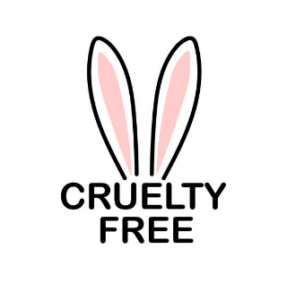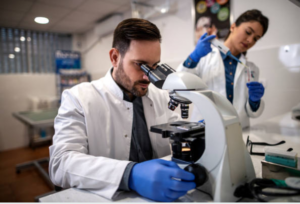Momentum Builds to Ban Animal Testing in Cosmetics

In recent years, a seismic shift has occurred in the beauty industry as consumers, brands, and regulatory bodies join forces in a global push for cruelty-free beauty. The call to end animal testing in cosmetics has gained unprecedented momentum, driven by a collective awareness of the ethical implications of such practices. In this blog, we will explore the evolution of cruelty-free beauty, the strides made toward banning animal testing, and the transformative impact of this movement on the cosmetics industry.
The Historical Context
The use of animals in cosmetic testing dates back to the early 20th century when the beauty industry began to expand rapidly. The initial tests were often crude and lacked both scientific rigor and ethical considerations. Animals such as rabbits, guinea pigs, and mice were subjected to skin irritancy tests, eye irritation tests, and lethal dose tests, among others.
One of the landmark events that drew attention to the ethical concerns of animal testing was the publication of the book “Silent Spring” by Rachel Carson in 1962. While not specifically focused on cosmetics, the book raised awareness about the environmental impact of pesticides and fostered a broader cultural shift toward questioning the use of animals in scientific experiments.
The 1980s and 1990s witnessed an upsurge in public awareness regarding animal welfare issues. High-profile campaigns by animal rights organizations, supported by celebrities and influencers, brought the ethical concerns of animal testing to the forefront of public consciousness. Disturbing images of animals subjected to testing procedures sparked outrage and triggered a growing movement advocating for cruelty-free practices in the beauty industry.
During this period, organizations like People for the Ethical Treatment of Animals (PETA) emerged as influential advocates for animal rights. PETA’s efforts to expose and protest against companies conducting animal testing contributed significantly to the increased scrutiny of cosmetic testing practices.

The Cruelty-Free Revolution
The late 20th century and early 21st century saw the emergence of the cruelty-free beauty movement as a powerful force for change. Consumers became increasingly conscious of the ethical implications of their purchasing decisions, leading to a surge in demand for products that did not involve animal testing.
The Body Shop, founded by Anita Roddick in 1976, played a pioneering role in promoting cruelty-free beauty. The company openly rejected animal testing and actively campaigned against it. The success of The Body Shop demonstrated that there was a market for ethical beauty products, inspiring other brands to reconsider their testing practices.
Moreover, the development of alternative testing methods gained momentum during this period. Scientists began exploring alternatives such as in vitro testing, which uses human cells or tissues to assess the safety of cosmetic products. These alternatives aimed to provide more accurate and humane testing methods, challenging the conventional reliance on animal experimentation.
Global Initiatives and Legislation
As the global momentum for cruelty-free beauty gained traction, governments and international organizations began recognizing the need for comprehensive legislation to address the ethical concerns surrounding animal testing in the cosmetics industry. Several significant initiatives and legislative actions have marked key milestones in the global push for cruelty-free beauty.
- European Union Ban (2004 and 2009): The European Union (EU) took a pioneering step in 2004 by implementing a ban on animal testing for finished cosmetic products. This ban was extended in 2009 to include a prohibition on testing cosmetic ingredients on animals. The EU’s commitment to cruelty-free beauty set a precedent for other regions and countries, signaling a global shift towards more ethical practices in the cosmetics industry.
- Australia and New Zealand: Both Australia and New Zealand have made strides in addressing the issue of animal testing in cosmetics. In 2019, the Australian government introduced a bill to ban cosmetic testing on animals, signaling a commitment to align with international standards for cruelty-free beauty. Similarly, New Zealand has explored legislative measures to prohibit or restrict cosmetic animal testing, reflecting a broader global trend toward ethical practices in the beauty sector.
- India’s Ban on Animal Testing (2014): India, with its rich cultural history and growing influence in the beauty industry, implemented a significant ban on cosmetic testing on animals in 2014. The move was celebrated globally as a positive step toward cruelty-free beauty, and it demonstrated that diverse regions were recognizing the ethical imperative of such legislation.
- Israel’s Ban on Animal Testing (2013): Israel became the first country in the world to implement a comprehensive ban on the sale and import of animal-tested cosmetics in 2013. This landmark legislation not only underscored Israel’s commitment to cruelty-free beauty but also served as an inspiration for other nations to reconsider their stance on animal testing in the cosmetics sector.
- China’s Evolving Regulations: China, known for its previous mandatory animal testing requirements for imported cosmetics, has undergone significant changes in recent years. In 2020, China announced that it would no longer require animal testing on domestically-produced cosmetic products, representing a substantial step toward cruelty-free practices. While challenges persist for foreign brands seeking entry into the Chinese market, the evolving regulatory landscape signals progress in the global push for cruelty-free beauty.
- The Humane Cosmetics Act (United States): In the United States, efforts have been made to address animal testing in the cosmetics industry through proposed legislation such as the Humane Cosmetics Act. While federal regulations regarding cosmetic testing on animals are currently limited, individual states like California have enacted laws to ban or restrict such practices.
- Collaboration of Cruelty-Free Certification Bodies: Internationally recognized cruelty-free certification organizations, such as Leaping Bunny and PETA’s Beauty Without Bunnies program, have played a pivotal role in establishing and promoting cruelty-free standards. Brands that meet these certification criteria gain credibility and recognition in the global market, further incentivizing a shift toward cruelty-free practices.
- Global Partnerships and Advocacy: International organizations and coalitions, including the Humane Society International (HSI), the Cruelty Free International Leaping Bunny Program, and the #BeCrueltyFree campaign, actively work to promote global collaboration in banning animal testing for cosmetics. These groups engage with governments, industries, and consumers to raise awareness and advocate for cruelty-free legislation worldwide.

Major beauty brands, too, have responded to the call for cruelty-free beauty by adopting policies that align with ethical standards. Industry giants are increasingly committing to eliminating animal testing from their supply chains, with many obtaining cruelty-free certifications from reputable organizations.
For instance, L’Oréal, one of the world’s largest cosmetics companies, has invested in alternative testing methods and has made substantial progress in moving away from animal testing. Similarly, cruelty-free brands like Too Faced, Urban Decay, and Tarte Cosmetics have built successful business models on the foundation of ethical and cruelty-free beauty practices.
Computer modeling, powered by artificial intelligence, has also become a groundbreaking tool in cosmetic safety assessments. These virtual simulations can predict the potential effects of ingredients, offering a cruelty-free and efficient alternative to traditional animal testing.
Challenges and Opportunities
While progress is being made, the global push for cruelty-free beauty still faces challenges. Some regions and countries lack clear regulations or enforcement mechanisms, allowing animal testing to persist. Additionally, certain cosmetic ingredients may require further research to develop alternative testing methods.
However, these challenges present opportunities for collaboration between governments, the beauty industry, and advocacy groups. By working together to strengthen regulations, invest in research, and share knowledge, stakeholders can accelerate the transition to a cruelty-free future.
Contrary to the misconception that cruelty-free beauty is a niche market, the economic case for going cruelty-free is compelling. The demand for ethically produced cosmetics is on the rise, and consumers are willing to pay a premium for products that align with their values. Beauty brands that prioritize cruelty-free practices not only contribute to a positive global cause but also position themselves as leaders in a market that values ethical considerations.
Central to the success of the global push for cruelty-free beauty is consumer empowerment through education. Beauty bloggers, influencers, and content creators play a crucial role in raising awareness about the ethical implications of animal testing. By providing information on cruelty-free alternatives, product reviews, and brand comparisons, they empower consumers to make informed choices that support the cruelty-free movement.

As we look to the future, the trajectory of the global push for cruelty-free beauty appears promising. More countries are expected to enact legislation against animal testing, and technological innovations will continue to refine alternative testing methods. The beauty industry’s shift towards cruelty-free practices is not just a trend but a transformative movement that reflects evolving consumer values.
In conclusion, the global push for cruelty-free beauty represents a monumental shift in the cosmetics industry. From legislative changes to corporate commitments and technological advancements, the momentum is building towards a future where the beauty products we love are no longer tested on animals. As consumers, influencers, brands, and regulators unite in this ethical cause, the beauty industry is not only evolving but also paving the way for a more compassionate and sustainable future. By choosing cruelty-free beauty, we contribute to a global movement that values the well-being of all living beings and ensures that beauty is cruelty-free, inside and out.




